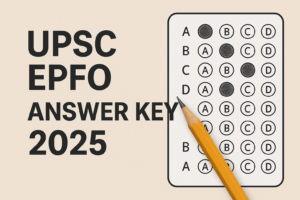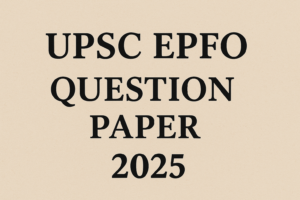Q15. How can Artificial Intelligence (AI) and drones be effectively used along with GIS and RS techniques in locational and areal planning?(15 Marks, 250 words)
| Approach |
| Introduce with the revolution in the locational and areal planning due to emerging technology. In the main body write the use of AI, drones, Geographic Information Systems (GIS), and Remote Sensing (RS) in locational and areal planning such as disaster risk management, in the infrastructure and development projects etc. Conclude with the linking of these technologies in achieving India’s goals of smart cities, climate resilience, and inclusive growth. |
Locational and Areal planning involves the optimal allocation of resources, infrastructure, and services across space. Traditionally dependent on surveys and manual mapping, it has now been revolutionized by AI, drones, Geographic Information Systems (GIS), and Remote Sensing (RS).
Use of AI in GIS and RS techniques for locational and areal planning
| Application Area |
Description |
Examples |
| Feature extraction and attribution |
Automating the process of identifying and categorising geographic features from satellite imagery or other spatial data sources with unique speed and accuracy. |
Used in Digital India Land Records Modernization Programme (DILRMP) for mapping property boundaries, land parcels, and cadastral surveys. |
| Satellite image analysis |
Analysing satellite imagery and identifying patterns and changes in images that are not easily visible to the human eye. |
Utilized by ISRO’s Bhuvan portal and National Remote Sensing Centre (NRSC) for mapping forests, urban expansion, and wetlands. |
| Predictive analytics for natural disasters |
Predicting natural disasters by analysing historical data and identifying risk patterns. Helps prepare for and respond to disasters. |
Used by NDMA for flood forecasting (e.g., Brahmaputra Basin), and cyclone impact modelling in Odisha and Andhra Pradesh. |
| Urban planning and smart cities |
Simulating various planning scenarios for sustainable development, infrastructure, and traffic management. |
Implemented under the Smart Cities Mission to design traffic flow, utility mapping, and slum redevelopment in cities like Pune, Surat, and Bhubaneswar. |
| Agricultural monitoring |
Optimising irrigation, predicting crop yields, and detecting plant diseases using spatial data. |
Used in FASAL (Forecasting Agricultural output using Space, Agro-meteorology and Land based observations) and Smart Agriculture pilots in Punjab and Karnataka. |
| Climate change analysis |
Analysing spatial data to assess regional climate impact and plan adaptation strategies. |
Used in State Action Plans on Climate Change (SAPCCs) and Himalayan glacier retreat studies by G.B. Pant Institute and ISRO. |
| Autonomous vehicles and navigation systems |
Enhancing GIS for route optimisation and obstacle avoidance in real-time. |
Applied in pilot programs for autonomous metro systems (e.g., Delhi Metro Phase IV) and traffic management using AI-GIS in Bengaluru and Hyderabad. |
| Resource exploration |
Identifying exploration sites and reducing environmental impact using spatial data. |
Used in mineral exploration by Geological Survey of India (GSI) in Jharkhand, Chhattisgarh, and Odisha; also for offshore oil and gas prospecting. |
| Infrastructure management |
Monitoring infrastructure health, predicting repair needs, and reducing failure risks. |
Used by Indian Railways for track inspection via drone-based imagery and AI models; also applied in National Highways Authority of India (NHAI) asset management. |
Use of drones in GIS and RS techniques for locational and areal planning
| Application Area |
Description |
Examples |
| High-Resolution Data Collection |
Drones capture detailed aerial imagery and other sensor data, achieving higher precision and resolution than satellite data, which is crucial for accurate mapping and analysis. |
During flood mapping in Assam, drones provide centimeter-level imagery of submerged villages and breached embankments, while satellites only offer meter-level resolution. |
| Rapid Data Collection |
Drones enable rapid data collection, allowing GIS professionals to obtain up-to-date information on changing landscapes or dynamic environments |
monitoring crop health in agriculture, assessing damage after natural disasters, or tracking urban development |
| Accessibility |
Drones provide access to remote or inaccessible areas. This accessibility expands the scope of GIS mapping projects, enabling comprehensive coverage of diverse landscapes and ecosystems. |
During natural disasters and emergencies, drones play a critical role in disaster management and response efforts |
| Enhanced safety |
By replacing manned aerial surveys with drones, GIS mapping projects can enhance safety for personnel involved in data collection. |
aerial inspections of bridges, dams, pipelines, and power lines, drones provide engineers and maintenance crews with detailed imagery |
| Multi-Sensor Capabilities |
Drones are not limited to visual imagery; they can also carry a variety of sensors for specialised data collection. From LiDAR (Light Detection and Ranging) for 3D mapping to thermal cameras for environmental monitoring, drones can integrate different sensors to gather diverse datasets for GIS analysis. |
|
AI, drones, GIS, and RS together represent a paradigm shift in locational and areal planning. By enabling real-time, accurate, and predictive decision-making, they ensure efficient resource allocation, disaster resilience, and sustainable development. Their integration will be critical for achieving India’s goals of smart cities, climate resilience, and inclusive growth.
Sharing is caring!

 UPSC EPFO Answer Key 2025 Out (Unofficia...
UPSC EPFO Answer Key 2025 Out (Unofficia...
 UPSC EPFO Question Paper 2025 PDF Downlo...
UPSC EPFO Question Paper 2025 PDF Downlo...
 UPSC EPFO Admit Card 2025 Out @ upsc.gov...
UPSC EPFO Admit Card 2025 Out @ upsc.gov...

























